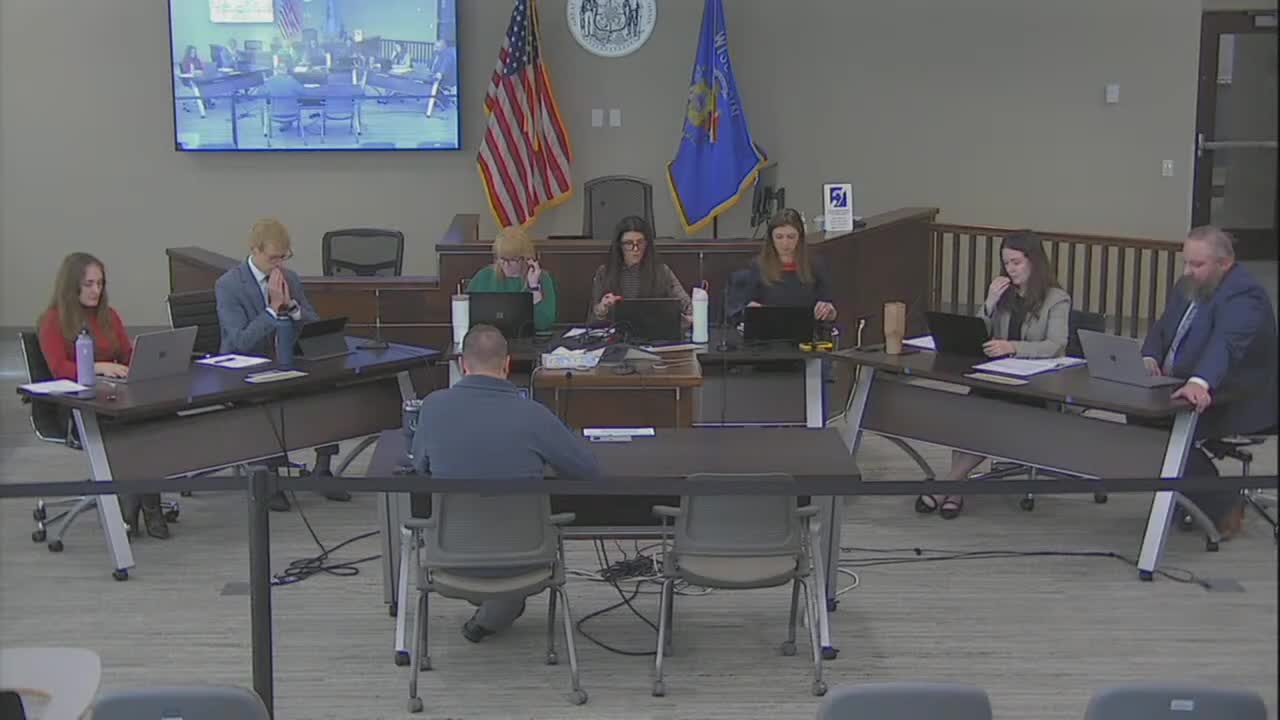PSC approves Grid Forward / Central Wisconsin CPCN with route, mitigation and monitoring conditions
October 31, 2025 | Public Service Commission, State Agencies, Executive, Wisconsin
This article was created by AI summarizing key points discussed. AI makes mistakes, so for full details and context, please refer to the video of the full meeting. Please report any errors so we can fix them. Report an error »

The Public Service Commission voted Oct. 30 to issue a certificate of public convenience and necessity for the Grid Forward (Central Wisconsin) transmission project (LRTP 6), finding that the record demonstrates substantial regional reliability and economic benefits and adopting a suite of standard and project-specific protections to reduce environmental and landowner impacts.
Commissioner Hawkins opened the discussion and emphasized that Grid Forward is one of the largest transmission projects the commission has reviewed: the application includes roughly 200 miles of new 345 kV construction plus approximately 175 miles of rebuilds of lower-voltage lines and other system changes. The project is part of MISO’s Tranche 1 LRTP portfolio and was modeled alongside other regional projects that produced a reported 2.3–4.0 benefit-to-cost ratio for Wisconsin when considered together.
The commission evaluated two route alternatives and multiple public-proposed adjustments. Using staff analysis and public input, commissioners authorized the applicants’ proposed route (the shorter, lower-cost option), denied a proposed “bump-out” reroute around the village of Maryland—citing high cost (≈$6.6 million) and the introduction of newly impacted residents—and approved several minor, landowner-driven modifications that staff and the applicant found feasible and low-cost (sections 7a–7c). Because several structure-location proposals arrived late at the public hearing, the commission adopted a project-specific order point directing applicants to work with affected landowners “to the extent practicable” regarding placement of facilities and access roads for four enumerated late-filed proposals.
The commission adopted standard order conditions and a set of project-specific measures similar to those required in the earlier transmission CPCN. Project-specific requirements include coordination with the State Historic Preservation Officer (SHPO) to avoid impacts to the Silver Mound Historic District; identification and avoidance/minimization of remnant prairie areas found in the right-of-way; a landowner notification and site-specific restoration process that gives landowners input on supplemental seed mixes where ground disturbance requires reseeding; oak-wilt and HRD (root disease) avoidance measures tied to DNR guidance; visual-impact mitigation at the Jump River substation; and direction to procure an independent environmental or agricultural monitor (IEM/IAM) to report to the commission and state agencies during construction.
Commissioners stressed that certification and siting approval do not address cost recovery; those issues will be resolved through MISO and FERC processes and any future rate proceedings. The motion to approve Docket 5CE157 with the discussed modifications and conditions was moved, seconded and approved by voice vote.
Commissioner Hawkins opened the discussion and emphasized that Grid Forward is one of the largest transmission projects the commission has reviewed: the application includes roughly 200 miles of new 345 kV construction plus approximately 175 miles of rebuilds of lower-voltage lines and other system changes. The project is part of MISO’s Tranche 1 LRTP portfolio and was modeled alongside other regional projects that produced a reported 2.3–4.0 benefit-to-cost ratio for Wisconsin when considered together.
The commission evaluated two route alternatives and multiple public-proposed adjustments. Using staff analysis and public input, commissioners authorized the applicants’ proposed route (the shorter, lower-cost option), denied a proposed “bump-out” reroute around the village of Maryland—citing high cost (≈$6.6 million) and the introduction of newly impacted residents—and approved several minor, landowner-driven modifications that staff and the applicant found feasible and low-cost (sections 7a–7c). Because several structure-location proposals arrived late at the public hearing, the commission adopted a project-specific order point directing applicants to work with affected landowners “to the extent practicable” regarding placement of facilities and access roads for four enumerated late-filed proposals.
The commission adopted standard order conditions and a set of project-specific measures similar to those required in the earlier transmission CPCN. Project-specific requirements include coordination with the State Historic Preservation Officer (SHPO) to avoid impacts to the Silver Mound Historic District; identification and avoidance/minimization of remnant prairie areas found in the right-of-way; a landowner notification and site-specific restoration process that gives landowners input on supplemental seed mixes where ground disturbance requires reseeding; oak-wilt and HRD (root disease) avoidance measures tied to DNR guidance; visual-impact mitigation at the Jump River substation; and direction to procure an independent environmental or agricultural monitor (IEM/IAM) to report to the commission and state agencies during construction.
Commissioners stressed that certification and siting approval do not address cost recovery; those issues will be resolved through MISO and FERC processes and any future rate proceedings. The motion to approve Docket 5CE157 with the discussed modifications and conditions was moved, seconded and approved by voice vote.
Don't Miss a Word: See the Full Meeting!
Go beyond summaries. Unlock every video, transcript, and key insight with a Founder Membership.
✓
Get instant access to full meeting videos
✓
Search and clip any phrase from complete transcripts
✓
Receive AI-powered summaries & custom alerts
✓
Enjoy lifetime, unrestricted access to government data
30-day money-back guarantee

